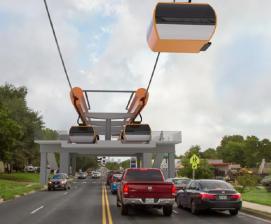White House Pitches $400M for Healthier Neighborhood Food Outlets
The connection between walkable development and grocery shopping may not seem immediately apparent — until you consider studies conducted in cities from Austin to Seattle that showed the share of trips taken by foot or by transit rises as local food outlets move closer to residential areas.
 The White House budget envisions a new investment in urban farmers markets such as this one, which served D.C.’s low-income Anacostia area for two years. (Photo: DC Food for All)
The White House budget envisions a new investment in urban farmers markets such as this one, which served D.C.’s low-income Anacostia area for two years. (Photo: DC Food for All)Even in transit-rich New York, a highly touted new Costco is laying off employees as shoppers avoid its not-too-walkable location. On the flip side, farmers’ markets are seeing new growth and serving more lower-income shoppers in Milwaukee, Oakland, and other areas.
Now the White House is getting in on the action, with $400 million included in its fiscal year 2011 budget to support development of new food outlets in urban communities where the nearest grocery store is often a half-mile or more away — the neighborhoods that policymakers call "food deserts."
The White House proposal is modeled after a Pennsylvania effort that has steered more than $57 million in grants and loans to develop 74 local food markets in lower-income areas of the state. The Obama administration’s version would be anchored by $250 million in New Market Tax Credits, which give developers incentive to launch new projects in economically distressed areas.
While the $400 million budget plan is not being directed through the U.S. DOT, it could have a significant upside for urban transportation officials looking to improve access to transit and create new opportunities for walkability.

